Matador Network's Blog, page 156
June 13, 2024
This New Flight Will Make Traveling to Alaska From the East Coast a Breeze

Starting today and until August 19, 2024, Alaska Airlines will operate daily, nonstop flight between New York’s JFK airport and Ted Stevens Anchorage International Airport, Alaska, making it easier for both city dwellers and Alaskans to enjoy a change of scenery this summer.
This new direct flight is the only nonstop service between the two airports, and the longest in the Alaskan Airline network, covering 3,385 miles. The seven-hour-and-45-minute flight will depart every day from Anchorage at 8 PM and land in New York City at 7:05 AM; it will then turn around and depart New York City at 9:45 AM and land back in Anchorage at 1:30 PM.
This brand new flight makes New York City one of 14 nonstop destinations from Anchorage to the Lower 48 and Hawaii available this summer with Alaska Airlines. The other 13 destinations are: Chicago, Denver, Honolulu, Los Angeles, Las Vegas, Minneapolis, New York JFK, Phoenix, Portland, Salt Lake City, San Diego, San Francisco, Seattle and Seattle/Everett (Paine Field).
Once in Anchorage, East Coaster can explore the Frontier State by train with the Alaska Railroad. The rail operator runs three routes around the state in the summer: The Coastal Classic from Anchorage to Seward, The Denali Star from Anchorage to Fairbanks, and the Glacier Discovery from Anchorage to Grandview. Now matter the route chosen, an Alaska Railroad train journey delivers on amazing views of the Alaska wilderness in the utmost comfort.
Those who prefer a more adventurous trip might want to go gold panning, which is possible near Anchorage, or visit Kenai Fjords National Park, which is an easy day trip from Anchorage, to go wildlife watching, hiking on glacier, or even kayak in the fjords. 
Where to Play, Eat, and Stay in Virginia Beach, Home of the World’s Largest ‘Pleasure Beach’
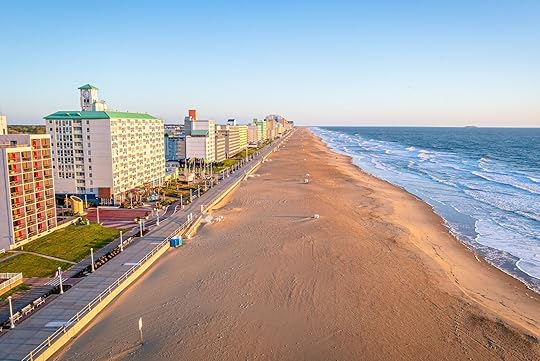
Of all the coastal destinations on the planet, you might be surprised to learn that Virginia plays host to the “largest pleasure beach” in the world, according to the Guinness Book of World Records. The record belongs to Virginia Beach, a seaside city located where Chesapeake Bay meets the Atlantic Ocean, with a coastline that stretches some 35 miles for beachgoers to enjoy.
Having not been to Virginia’s eponymous coastal city since I was eight years old, my expectations of Virginia Beach were drenched with visions of air-sprayed tee-shirts and the smell of chlorine before my recent visit. However, in the 20-plus years since I forged those first memories, the city has elevated itself. Thanks to big-name investors and the passionate folks behind the trendy ViBe District, Virginia Beach is undergoing a shift that’s setting it apart from other beachfront destinations — it’s building impressive community art, innovative activities and festivals, and an up-and-coming culinary scene that removes the gimmicky nature most beach towns suffer from.
One exciting attraction that’s underway is Atlantic Park, a year-round surf park that’s expected to open in the spring of 2025. Together with Venture Realty Group, Grammy Award winner Pharrell Williams is funding the $330 million venue, which will provide perfect wave conditions for both new and experienced surfers. The space will also feature a concert venue called the Dome, as well as restaurants, bars, and shops.
If all that oceanfront and attractions like the ViBe District and Atlantic Park didn’t make it clear enough, there’s never been a better time to visit Virginia Beach. From exciting activities to the best food in town, here’s a rundown of how and where to spend your time in Virginia Beach when you come.
Things to do in Virginia BeachBike along the boardwalk
Photo: Cait Kontalis
Great beaches often have iconic boardwalks, and Virginia Beach is no exception. One of the best things about the Virginia Beach Boardwalk is that it has separate paths for cyclists and pedestrians. I rented a bike from Cherie’s Bicycle & Blade Rentals to explore the many memorials scattered across the boardwalk. (Cherie’s also rents out surreys, which are four-wheeled bikes that can seat up to six people and are great for families with young kids.)
As someone whose partner is currently serving in the military, I particularly enjoyed stops at the Navy SEAL Monument and Naval Aviation Monument. But there are many other interesting monuments like the Norwegian Lady, which has a sister statue in Østfold, Norway. The boardwalk also sets a scenic outdoor stage for the annual Virginia MOCA Boardwalk Art Show, hosted by the Virginia Museum of Contemporary Art, which will take place October 4-6 this year.
Explore the ViBe District
Photo: Cait Kontalis
Since its official formation in 2015, the ViBe District has transformed a formerly struggling neighborhood into the artistic center of Virginia Beach. With more than 60 public murals, the ViBe is the spot for Insta-worthy photos to make your friends jealous. The district also launched the VB Street Art Festival this year to let onlookers see how its art is made up close by inviting artists to live paint 15 sculptures over the course of a long weekend. In addition to the great art, the ViBe District has tons of local eateries and boutiques worth exploring.
Attend a festival
Photo: Cait Kontalis
There’s always something big happening at Virginia Beach. The weekend I attended, the VB Street Art Festival, Jackalope Festival, and the Point Break Music Festival were all happening simultaneously. The Point Break Music Festival was new in 2024, and you can expect to find it back in 2025. The beachfront reggae celebration featured headliners like Sublime and Wiz Khalifa. Whether you’re a fan or the genre or not, vibing to music in view of the ocean is an experience you won’t find at just any festival.
Hit the beach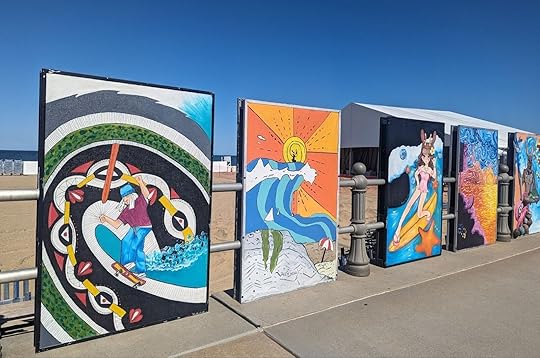
Photo: Cait Kontalis
Did you really go to Virginia Beach if you didn’t have a beach day? With three miles of sandy shores, there are seemingly endless spots to plop down your blanket and umbrella. The entire stretch is scattered with restaurants, bars, beach shops, and anything else you may need for your ideal day in the sun.
If you’re driving, there are a few parking garages. Be sure to bring cash to expand your options for parking, as some locations don’t accept credit cards. I enjoyed setting up camp near the Virginia Beach Fishing Pier for an added bonus of people-watching.
Where to eat and drink in Virginia BeachChick’s Oyster BarView this post on InstagramA post shared by Chick’s Oyster Bar (@chicksoysterbar)
A true hole-in-the-wall seafood joint, Chick’s Oyster Bar is known for good vibes, Navy Seal spotting, and, of course, excellent oysters. Situated over the water, you can stroll the restaurant’s private dock while waiting for your order to pop up. Chick’s also offers a wide selection of salads, sandwiches, and the local-favorite creamy she-crab soup.
Chick’s Oyster Bar: 2143 Vista Cir, Virginia Beach, VA 23451
Java Surf Cafe & Espresso Bar
Photo: Cait Kontalis
Java Surf Cafe & Espresso Bar is a staple of Virginia Beach’s thriving ViBe District. The owner, Dwayne Appleton, has crafted an eclectic energy that promotes the neighborhood’s fellow small businesses. With a gorgeous patio space, Appleton invites up-and-coming vendors to set up shop and sell crafts, food, and even coffee to his own customers. I enjoyed the Mediterranean breakfast wrap alongside an iced hazelnut cappuccino while browsing the local vendors.
Java Surf Cafe & Espresso Bar: 1807 Mediterranean Ave, Virginia Beach, VA 23451
Orion’s RoofView this post on InstagramA post shared by Orion’s Roof (@orionsroofvb)
For a fancy rooftop night out on the town, Orion’s Roof delivers the views. Located 183 feet above the waterfront, the Asian-fusion hotspot offers food as spicy as the panoramas are beautiful. I tried the chicken pad thai while my companions opted for the impressive sushi selection. With or without a full meal, handcrafted rooftop cocktails (or mocktails) are always a treat.
Orion’s Roof: 4201 Atlantic Ave, Virginia Beach, VA 23451
Becca Restaurant & Garden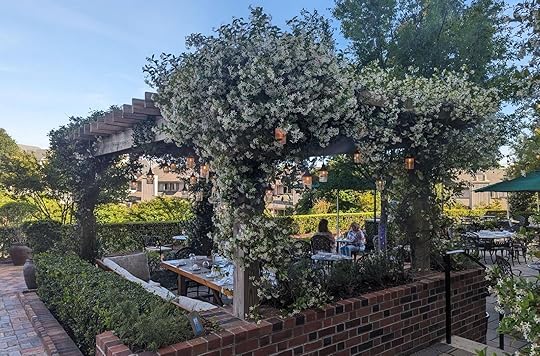
Photo: Cait Kontalis
Put on your Sunday finest because Becca Restaurant & Garden feels made for royalty. Situated within the historic Cavalier Hotel, the grounds have played host to American icons like F. Scott Fitzgerald, Frank Sinatra, and Judy Garland. The restaurant has a stunning outdoor patio filled with jasmine flowers and archways. I enjoyed the plum-glazed maple leaf duck breast with a rich glass of Hedges cabernet. Becca Restaurant is the perfect place to celebrate an anniversary, birthday, or other special occasion when in Virginia Beach.
Becca Restaurant & Garden: 4200 Atlantic Ave, Virginia Beach, VA 23451
May’s ParlorView this post on InstagramA post shared by May's Parlor (@maysparlor)
Whether you’re looking for filling breakfast sandwiches or your choice of French pastries, May’s Parlor is the place to be for your morning meal. I enjoyed a ham and cheese breakfast sandwich (the bread seemed to melt in my mouth) and a to-die-for blueberry Danish. It’s a small space, so be prepared to wait if you plan to sit and stay awhile.
May’s Parlor: 2708 Pacific Ave, Virginia Beach, VA 23451
Aslin Beer Company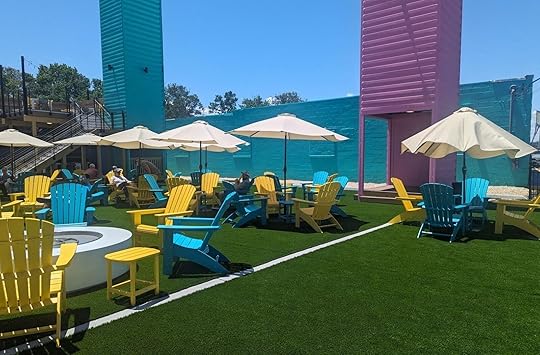
Photo: Cait Kontalis
I visited the Aslin Beer Company the week it opened. The roomy patio space and shipping-container design feel like a colorful playground for grown-ups. The brewery serves a variety of craft beers and has an in-house menu that includes smash burgers, pizzas, and salads. I enjoyed a pint of a Mexican-style lager called Swell Maneuvers.
Aslin Beer Company: 823 Virginia Beach Blvd, Virginia Beach, VA 23451
Tides Coastal KitchenView this post on InstagramA post shared by Tides Coastal Kitchen | Virginia Beach Restaurant (@tidescoastalkitchen)
If you’re looking to get away from the hustle and bustle of Virginia Beach, a trip to Tides Coastal Kitchen (located between Chesapeake Beach and First Landing Beach) is well worth a visit without forgoing prime real estate — the sunset views are unbeatable from its beautiful beachfront perch. As someone who notoriously hates seafood, I put on a brave face and gave the restaurant’s oysters a try. And you know what? I liked them. But if that’s not your thing, there are plenty of options from both land and sea, from burgers and beer-can chicken to shrimp scampi and cedar-plank salmon.
Tides Coastal Kitchen: 2800 Shore Dr, Virginia Beach, VA 23451
Aloha Snacks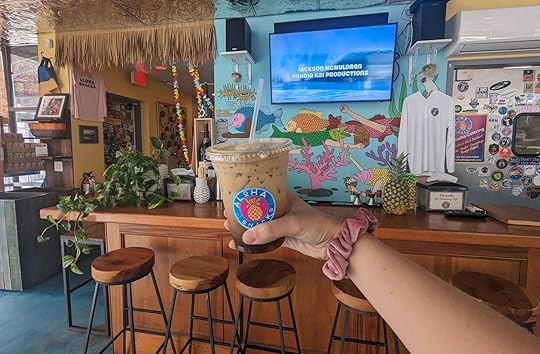
Photo: Cait Kontalis
Before heading back to the Norfolk airport, I grabbed a coconut iced latte and “Bacon My Heart” breakfast sandwich at Aloha Snacks to refuel for the quick flight back to Chicago. Aloha Snacks is a little slice of Hawaiʻi in the heart of Virginia Beach. What I particularly loved was its dedication to including Spam (yes, you read that right) throughout its menu, which features in dishes like the Burrito Nui (a diced spam, potato, kimchi, and egg dish). Aloha Snacks is a cute spot with energetic beach vibes radiating from its cozy storefront.
Aloha Snacks: 501 Laskin Rd, Virginia Beach, VA 23451
Where to stay in Virginia BeachMoxy Virginia Beach Oceanfront
Photo: Cait Kontalis
The Moxy Virginia Beach Oceanfront is affordable luxury at its finest. Its eclectic, stylish rooms feature quirky artwork, trendy decor, and a comfortable outdoor balcony. The hotel is also just plain fun. From the second-floor slide to the weekend DJ, a stay at the Moxy ensures you’re smack dab in the middle of Virginia Beach’s pulsating energy. In addition to a great bar with Asian-fusion-inspired bites, there’s also a pool and patio that serves as a perfect place to unwind — if you’re not on the beach, that is, which is only steps away.
Moxy Virginia Beach Oceanfront: 1201 Atlantic Ave, Virginia Beach, VA 23451
How to get to and around Virginia Beach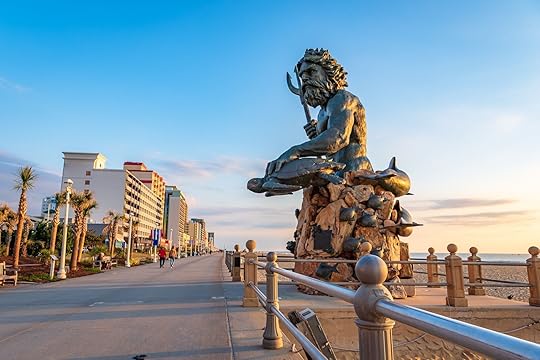
Photo: Chansak Joe/Shutterstock
Virginia Beach is a 30- to 45-minute drive from Norfolk International Airport. As a US military hub, there are many flight options available from major US carriers.
Once you’re there, getting around Virginia Beach is a breeze. There’s an affordable trolley service, as well as free rides through Freebee Virginia Beach. Download the Freebee app, and you’ll be able to call on-demand electric vehicles to escort you to your destinations. Traditional ride-share apps like Uber and Lyft are also available. 
Live Out Your Inner Cowboy at These Rural Montana Farm Airbnbs
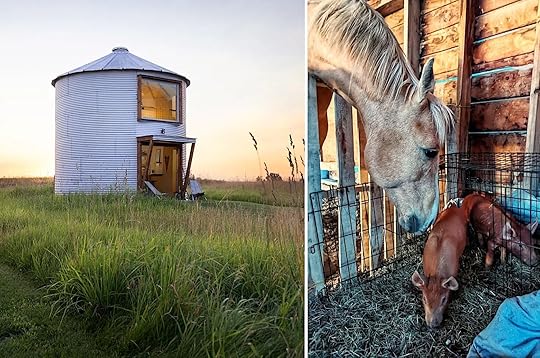
Staying on a working farm in Montana is a great way to experience rural life in Big Sky Country. Surrounded by mountains, fields, meadows, the Yellowstone River, wildlife, and farm animals, these Montana Airbnb farm stays offer some of the best country vacations across the state. And although part of the joy of spending time in the countryside is unplugging and slowing down, there’s an abundance of outdoor activities close to these properties. From day trips to Glacier and Yellowstone National Park, horseback trail riding, paddling across Flathead Lake, stargazing, and trout fishing to some of the most rewarding hiking trails in the US, Montana has it all — and then some.
Traveling to Montana? Check out Matador’s Montana accommodations guides: Montana’s New Adults-Only Resort Is an Exclusive Luxury Experience in the Big Sky State 11 Missoula Airbnbs to Harness Montana’s Great Outdoors 10 of the Best Hotels Near Glacier National Park Take a Fun Escape Into Nature at These Airbnbs Near Glacier National ParkWhy The Ranch at Rock Creek, One of America’s Priciest Hotels, Is More Affordable Than You Think This Trendy Bozeman Motel Is Perfect for Remote Work With Low Rates Through Winter
We hope you love the Montana Airbnb farm stays we recommend! Just so you know, Matador may collect a small commission from the links on this page if you decide to book a stay. Listed prices are accurate as of the time of publication.
Watch tower near the Mission Mountains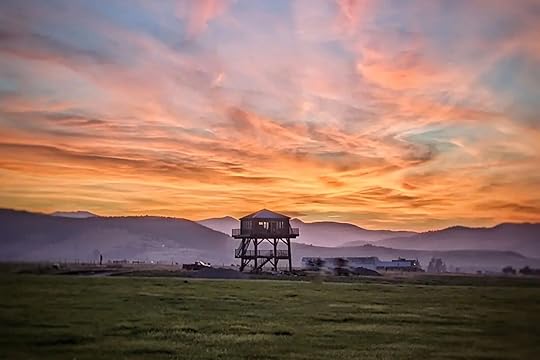 Photo: Airbnb
Photo: Airbnb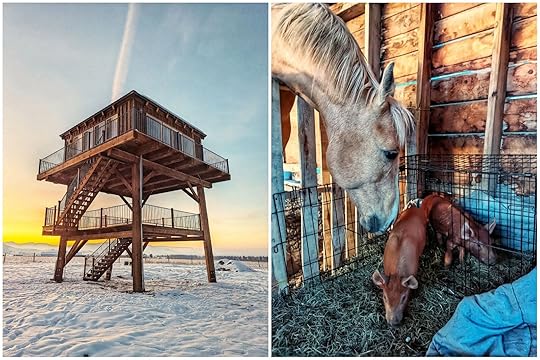 Photo: Airbnb
Photo: Airbnb Photo: AirbnbSee more photos
Photo: AirbnbSee more photosThis Airbnb is on a working ranch near the Mission Mountains. The tower offers stunning 360-degree views and a surprisingly spacious interior. Complete with a kitchenette, bathroom, and even a clawfoot tub, it provides a comfortable base for exploring the surrounding area.
Missoula is roughly 30 miles north, so you can mix up your vacation between the rural countryside and the city. The nearest town to the tower is St. Ignatius which sits on the Flathead Indian Reservation. There’s a lot of activities nearby. You can take a drive through the National Bison Range, where you can observe herds of bison roaming alongside elk, bighorn sheep, antelope, and deer. The Mission Mountains (popularly known as the American Alps) have numerous hiking trails, and the nearby Flathead Lake, the largest freshwater lake west of the Mississippi, is popular for boating, fishing, and water sports.
Four guests, one bedroom
Price: $250 per night
 Photo: Airbnb
Photo: Airbnb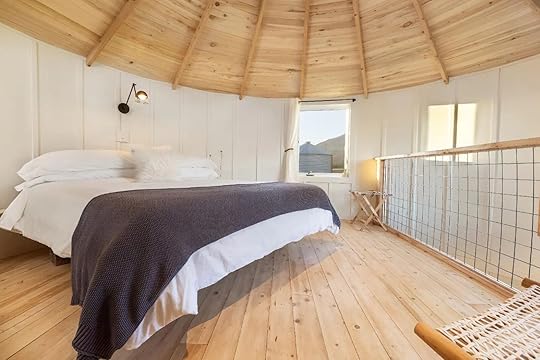 Photo: Airbnb
Photo: Airbnb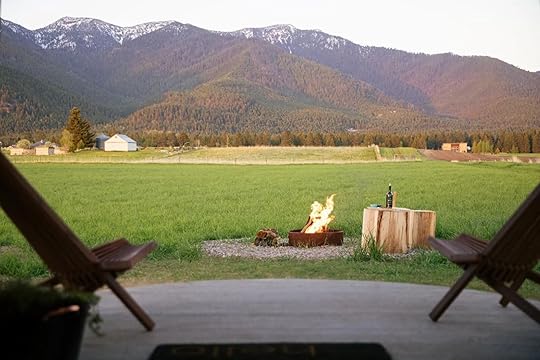 Photo: AirbnbSee more photos
Photo: AirbnbSee more photosLocated on a three-generation family farm, Clark Farm Silos were once working parts of the property. Affectionately nicknamed “soup cans” by the owners, the grain silos have been transformed into comfortable retreats, perfect for a couple or a small family exploring northwestern Montana. Each silo sleeps up to three guests and features a kitchenette, a private bathroom, and a loft bedroom with large windows to take in the beautiful views.
The farm is near the city of Kalispell and Glacier National Park. Because you’ll need a vehicle to stay rural in Montana, you can be a little more adventurous with your choice of Airbnb. Clark Farm puts you around 30 minutes from Glacier, so the drive is more than doable, and you can retreat to the silo after a day outdoors.
Three guests, one bedroom
Price: $483 per night
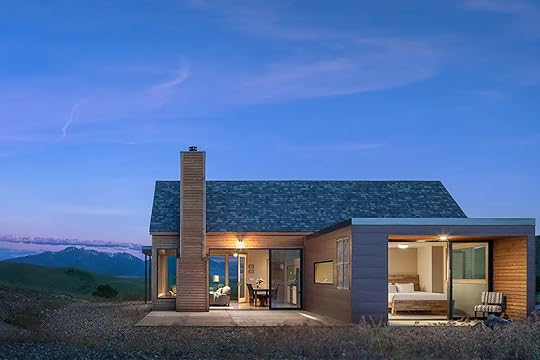 Photo: Airbnb
Photo: Airbnb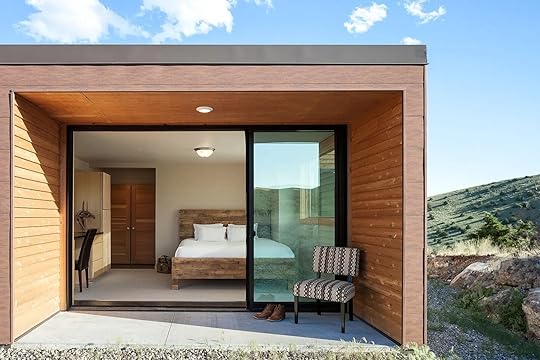 Photo: Airbnb
Photo: Airbnb Photo: AirbnbSee more photos
Photo: AirbnbSee more photosThis two-bedroom guesthouse is on a 230-acre working ranch. It’s somewhat set apart for complete privacy with walls of glass that open onto 360-degree, unobstructed panoramic views, allowing you to feel immersed in the landscape.
Erik’s Ranch is 40 minutes from the North Entrance into Yellowstone and one hour from Bridger Bowl. The ranch is a nonprofit organization run by young adults with autism who work as tour guides, horse groomers, and more. For a small extra fee, you can enjoy group-lead snowshoeing in winter, learn about horsemanship, and go fly fishing and rafting in the warmer months. If you’re looking for a mindblowing Airbnb with additional hands-on farm and outdoor activities, this is the place.
Six guests, two bedrooms
Price: $374 per night
 Photo: Airbnb
Photo: Airbnb Photo: Airbnb
Photo: Airbnb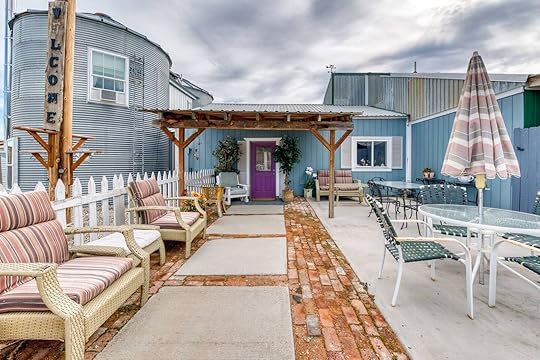 Photo: AirbnbSee more photos
Photo: AirbnbSee more photosOnce part of a dairy farm, this two-bedroom silo has been transformed into a two-story living space. Inside, you’ll find modern amenities, but outside, rolling hills and a working farm will take you back to a simpler time. It is pet-friendly (for a fee), and you can run your dog leash-free on the farm.
The farm is in the heart of Montana’s Bitterroot Valley, between the Bitterroot Mountains on one side and the Sapphire Range on the other. Just a short distance away, the Teller Wildlife Refuge sprawls along the Bitterroot River, protecting Montana’s riparian habitat. Although this area is closed to the public (without appointment), there is a lovely scenic hiking trail nearby that caters to all experience levels.
Four guests, two bedrooms
Price: $195 per night
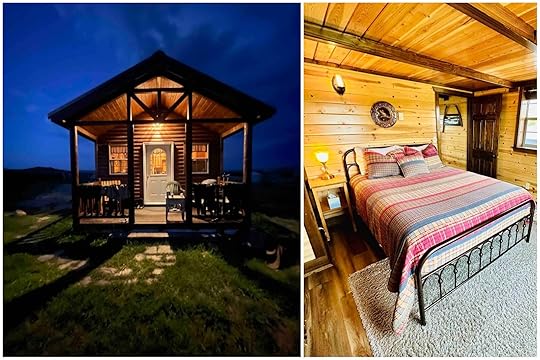 Photo: Airbnb
Photo: Airbnb Photo: Airbnb
Photo: Airbnb Photo: AirbnbSee more photos
Photo: AirbnbSee more photosThis cabin sits on Hagerman Ranch, a family-owned (fifth-generation Montanans) cattle ranch near Greycliff, Montana, in the southwestern part of the state. The ranch lies against the backdrop of the Crazy and Absaroka Mountain ranges, with the Yellowstone River winding its way for three miles across the property. The Hagemans, Brian, Alison, and their two children, run the ranch with a focus on sustainable practices. They raise Angus cattle using entirely natural methods, with the cows being grass-fed and free of hormones and antibiotics.
The Airbnb itself has a simple set-up: a full kitchen, a bathroom, a main bedroom with a queen bed, and a sleeping loft with a double bed and two twin mattresses. If you require more space, there’s also a second house on the ranch with three bedrooms.
Six guests, one bedroom
Price: $139 per night
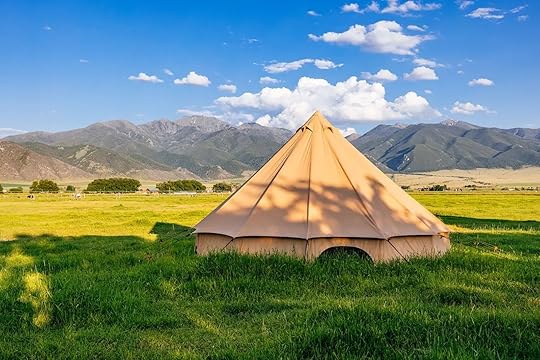 Photo: Airbnb
Photo: Airbnb Photo: Airbnb
Photo: Airbnb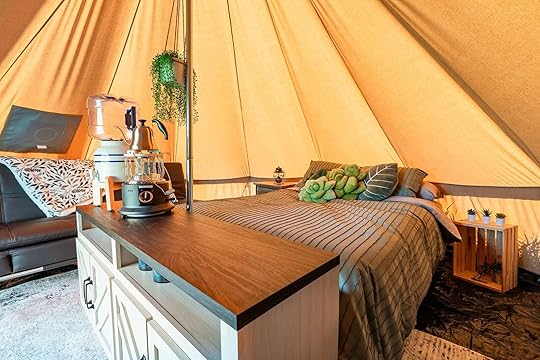 Photo: AirbnbSee more photos
Photo: AirbnbSee more photosThis glamping tent provides a cozy retreat on a formerly Amish farm in the rural southwest. It’s off-grid (solar) but has a private bathroom with a horse trough shower.
The retreat is near the small town of Whitehall in the Jefferson Valley. The surrounding area offers a variety of outdoor activities, including hot springs, rafting, hiking, dirt biking, and fishing. Yellowstone National Park is just a scenic drive away for those interested in exploring further afield. The hosts mention the farm’s free-range poultry, so you might get a visitor or two. You should also bring binoculars to spot bald eagles, deer, and the farm’s resident moose family.
Four guests, one bedroom
Price: $151 per night
 Photo: Airbnb
Photo: Airbnb Photo: Airbnb
Photo: Airbnb Photo: AirbnbSee more photos
Photo: AirbnbSee more photosThis private cabin offers a chance to experience authentic ranch life in Montana. Located on a working cattle ranch with over 6,000 acres, the cabin is a fully equipped retreat with comfortable furnishings and sleeping arrangements for up to five guests.
The nearest town is Big Timber. The Yellowstone and Boulder Rivers weave through the area, providing a backdrop for the charming small town. For anglers, the region has some of Montana’s finest blue-ribbon trout fishing in the Yellowstone River. Horseback riding can also be organized through a neighboring guest ranch, depending on the time of year.
Five guests, two bedrooms
Price: $250 per night
 Photo: Airbnb
Photo: Airbnb Photo: Airbnb
Photo: Airbnb Photo: AirbnbSee more photos
Photo: AirbnbSee more photosOriginally a 1950s grain silo, this one-bedroom Airbnb has been transformed into a cozy vacation rental near Kalispell, a 40-minute drive from Glacier National Park. Surrounded by fields, you can unwind on the rustic porch and take in the breathtaking Montana scenery and sunrises and sunsets that paint the sky with vibrant colors.
Two guests, one bedroom
Price: $200 per night
 Photo: Airbnb
Photo: Airbnb Photo: Airbnb
Photo: Airbnb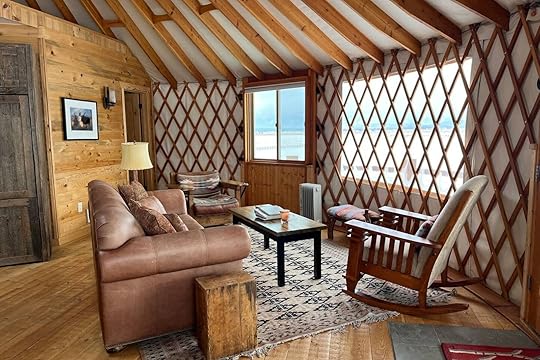 Photo: AirbnbSee more photos
Photo: AirbnbSee more photosIf you’re looking to escape the ordinary, you can book a stay in this luxurious two-bedroom yurt perched on a platform overlooking Flathead Lake. The panoramic views encompass the lake, Glacier National Park, and the Swan and Blacktail Mountains. The yurt has over 850 square feet of living space, including a full kitchen with high-end appliances, two separate bedrooms, a bathroom with laundry, and a spacious living area. Large windows and a balcony ensure you won’t miss a Montana sunrise or star-studded night sky.
The hosts also have a renovated barn for rent on Airbnb. The owners have completely rebuilt this 100-year-old structure, taking the original wood, beams, and roof and creating a modern rental. It has a little more space than the yurt and offers similar jaw-dropping views. 
Four guests, two bedrooms
Price: $235 per night
June 12, 2024
A Huge New Discovery at Pompeii Could Be the Start of Much More

Archaeologists recently made a significant discovery at one of the world’s most-excavated and well-known ruins.
The discovery was recently announced by the Italian Ministry of Culture in late May. The small room was discovered in a never-before-excavated section of Pompeii called Regio IX, one of nine districts within the modern-day, 163-acre site. The newly found room “has been interpreted as a sacrarium, a shrine devoted to ritual activities and the storage of sacred objects,” writes the official release, and shows a representation of one of the four season on each of the corners.
The fact that the room is blue is part of the reason why researchers think it must have had a sacred or important purpose. Blue is rarely used in frescos in Italy from this period, as it was an expensive, non-local pigment that required additional labor to produce. Blue “rarely occurs in Pompeian frescoes and was generally used for elaborately decorated rooms,” the release explains. It also notes items found in the room, including several bronze objects and more than a dozen amphorae (narrow-necked storage jars) that could indicate it was a room of special significance. Archaeologists think it’s part of a larger complex, and are currently excavating nearby bath buildings and a large reception room, likely leading to additional parts of a large home.

A close-up of well-preserved detailing in the Pompeii Blue Room. Photo: Pompeii Excavations E-Journal release
The Pompeii Blue Room is one of several noteworthy recent discoveries in this section of the site, including a large dining room with frescos inspired by the Trojan War, a bakery likely staffed by prisoners (and donkeys), and even a fresco some historians thought looked suspiciously like a pizza, a dish invented in nearby Naples many centuries after Pompeii. Spoiler: it turns out it’s probably a loaf of focaccia bread, as the various ingredients for pizza wouldn’t have been available to citizens in Pompeii’s heyday. Noteworthy discoveries are made at the site almost every year.
Only about two-thirds of Pompeii has been excavated to any extent, so there’s no telling what could be found next.
What happened in Pompeii?
Photo: Balate.Dorin/Shutterstock
Pompeii’s history stretches back millennia, likely first established by indigenous Oscan people around the 8th century BCE. The Etruscans followed, but by the 6th century BCE, the city fell under the sway of the Greeks, then the Romans. Pompeii thrived under Roman rule, becoming a prosperous commercial center with fertile soil and strategic location.
Unfortunately, that soil was fertile due to the nearby volcano, called Mount Vesuvius. It was thought to be dormant, but unleashed its fury in 79 CE. The eruption unfolded in a series of violent phases and was likely a Plinian eruption, one of the most violent types of volcanic eruptions possible (and named for Pliny the Elder, who died in the eruption). Plumes of ash and pumice likely choked the sky, raining down on Pompeii and its surrounding settlements. Quick-moving pyroclastic lava flows likely came racing down Vesuvius’ slopes, incinerating everything in their path with little-to-no notice.
The eruption shrouded Pompeii in a thick blanket of ash, preserving the city akin to a time capsule. For centuries, Pompeii remained buried and largely forgotten, and rediscovery came gradually, with initial excavations in the 16th century driven by the search for valuable artifacts. By the 18th century, more scientific efforts were underway to reveal the city frozen in time beneath the ground.
Today, Pompeii is a UNESCO World Heritage Site and one of the most-studied and researched archaeological sites in the world. It’s also one of the most popular tourist attractions in Italy, attracting close to three million visitors per year. 
2024’s Shark Attacks Are Alarming, but Sharks Don’t Want to Eat Humans
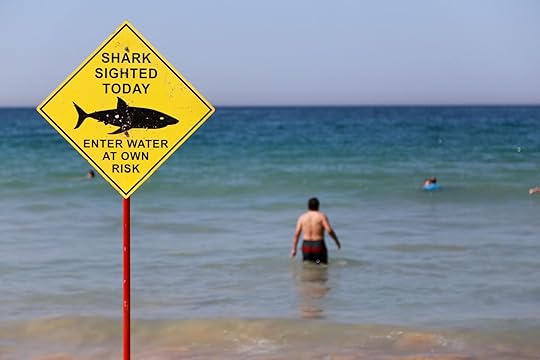
An increase in shark attacks around the world so far in 2024 has lit up newspaper headlines, but experts have long said that sharks aren’t really to blame.
On July 7, there were four attacks from (probably) three sharks across the US: one near Oahu, HI; and three in Destin, FL. Two of the Florida victims were near each other and probably attacked by the same shark. None of the attacks were fatal.
In March, there were two additional shark incidents in Oahu. One person received minor cuts to their foot, while the other was uninjured as the shark bit his surfboard. Earlier this year, a swimmer in Southern California received minor injuries from a shark bite, and in the Bahamas, a man fell off a boat and was attacked by sharks — not surprising, since he fell off a fishing boat that likely dragged a scent of blood and fish guts through the water.
In 2023, there were 104 confirmed shark attacks around the world, according to the International Shark Attack File (ISAF). Of those, 14 were fatal and 69 were unprovoked (i.e. not instigated by human interactions). The TSAF calculates a five-year average of roughly 63 unprovoked attacks per year, so 2023’s total is right in line with that estimate. The US has the most attacks of any country by sheer numbers, with about half occurring in the US. Of the US shark attacks, Florida has the most. Florida also has the most coastline of any US state, other than Alaska.
After most of the 2024 shark attacks to date, officials temporarily closed the beaches. When beaches re-open following shark attacks, there’s usually signage advising beachgoers to be extra careful. Sometimes, officials will use helicopters to scare sharks away from shore, and may have patrol boats near shore to easily come to swimmers’ aid if another shark-related incident should occur.
@britneycantrell0520 #sharks #panamacitybeachflorida #lagunabeach #baycountyflorida #sharksoftiktok #2024 #sharkattack #CapCut #palazzo ♬ original sound – Britney
Of the 2023 shark attacks around the world, the USAF says “Surfers and those participating in board sports accounted for 42% of incidents. Swimmers and waders accounted for 39%. Snorkelers/free divers accounted for 13%.” That make sense, as most sharks attack from below, and it’s very difficult for a shark to tell the difference between a person on a board and a fat seal or sea lion when they look straight up at the surface from below. Most sharks do “test bites” first when they can’t tell what something is, which is why most shark attacks aren’t fatal — as soon as a shark gets a mouthful of a surf board, person, or swimsuit, it realizes it isn’t a fish or a seal, and swims away.
Are 2024’s numbers above average? There have been 22 so far in 2024, and since summer just started in the northern hemisphere, it’s possible the year could end up a little above average — though it could also be well below average.
Irresponsible reporting threatens shark populations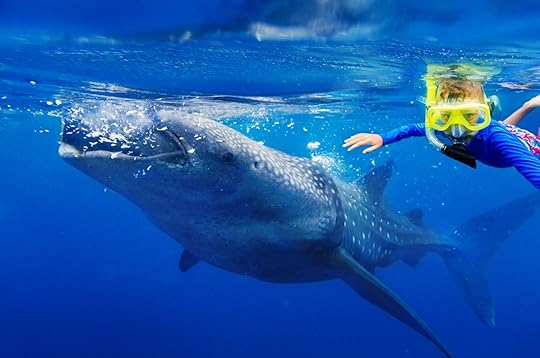
Most shark species are harmless to humans, including the massive whale sharks. Photo: Max Topchii/Shutterstock
Ever since the movie “Jaws” — which director Steven Spielberg said he regrets in some ways, as it led to a global hatred of sharks – people have had an unrealistic fear of sharks. Like any other species, sharks need to eat, and attacks on humans aren’t for any purpose other than that — they’re not trying to hurt humans, and probably don’t even understand what humans are.
While there have been many recent balanced articles spreading the word of experts that shark attacks are still extremely, extremely rare, some articles haven’t been so responsible. A Florida publication recently published an article in which it interviewed a fishing boat captain, quoting incorrect and harmful statements. His printed quotes say that shark populations are up more than they were 50 years ago (nearly all shark species in Florida have declined by about 70 percent, though some researchers do think some Pacific coastal species are slowly recovering), states that they aren’t actually endangered, and calls sharks “mean,” saying they’ll eat whatever they can around them.
Stories like this create an irresponsible hatred of sharks, which are a cornerstone species essential to the food web and overall ocean health. And a healthy ocean is essential for a healthy planet.
On social media, some users have posted videos that look frightening. But fortunately, knowledgable commenters are there to help out, as with a video posted by @ocean_therapy on TikTok. Commenters were quick to point out that the shark in the video was a nurse shark (a non-aggressive, common reef species often described as harmless), and that in Florida, sharks are part of the landscape. “Beautiful creatures! They are kind to share their homes with so many humans,” wrote one viewer.
@ocean_therapy Replying to @no uvu this was the end of july last year. #sunsetladyontiktok #30a #emeraldcoast #santarosabeach #summer #waltoncounty #shark #sharkattack #oceanlife #sharkweek #florida ♬ son original – Sp3ed._up._S0ng
When reading stories about shark attacks, it’s important to remember that sharks aren’t the enemy. The more people there are in the water, the more encounters with sharks are going to happen, even if the overall chance of getting bit is still roughly one in four million. Sharks do not purposefully attack humans. There are more than 300 species of sharks, only 30 of which have ever been suspected of biting humans, per NOAA.
Humans have killed so many sharks that their populations are a fraction of what they once were, and it’s created a false sense that shallow beaches are for humans. But when you step foot into the ocean, you’re entering shark territory, and it’s important to not let floating piers, flashy beach toys, and easy availability of paddleboards and jet ski rentals lure you into thinking it’s entirely safe. Other ocean hazards are far more dangerous, including rip currents (82 deaths in the US alone in 2023), toxic algae blooms (which killed more than 1,000 sea lions and dolphins in June 2023 in California alone), and even jellyfish, thought to kill about 1,000 people per year.
I’m a diver, and I’ve encountered lots of sharks in the wild. I always respect them and give them their space. The ocean is their territory, not mine, and I accept the very small risk of a bad encounter when I go into the ocean. And while the risk can be mitigated by behavior like not swimming at dusk and dawn, not swimming in murky water, and not swimming near schooling baitfish or active fishing areas, it’s always still. there — as it should be, since we need to preserve healthy ocean ecosystems.
While that may sound like something easy to say for someone who hasn’t had a shark-related incident, it’s the same viewpoint being echoed by some of the few people who have. That includes Anika Craney, who was attacked by a shark in Australia in 2020.
“I still love sharks,” she yelled to camera crews while being wheeled into the hospital for emergency repairs to her leg. “Sharks are beautiful!” 
Uber Boat Is the Most Scenic Way to Get to This London Airport

There are six major airports in London, and the most practical of them all is undeniably London City Airport. Located just 8.5 miles from Trafalgar Square, the very heart of the English capital, it’s the most central of all London airports.
There are multiple traditional ways to get between London’s city center and London City Airport: by taxi or ride share, by a painful string of city bus connections, or by a combination of subway and light rail trains. But while all of these are solid and reliable options, there’s one way to travel to and from London City Airport that’s a lot more fun and scenic than the rest: by boat.
Uber Boat by Thames Clippers sails on the River Thames throughout the city, including into East London where London City Airport City is located. The Uber Boats sail daily from early morning until late.
During the boat ride between London’s city center and the airport, travelers get to see the city’s most famous landmarks from a unique vantage point, including Big Ben, The London Eye, and The Shard, among others.

Photo: British Airways
Britain’s flagship carrier, British Airways, is currently partnering with Uber Boat by Thames Clippers to offer travelers who fly with BA Cityflyer a 25 percent discount on Uber Boat tickets, as well as a complimentary hot drink to be enjoyed during the sailing. To receive the discount, British Airways customers need to book online in advance and fly on the same day as their boat ride. As for the free hot drink, all they need to do is to show their boarding pass in the onboard café.
“Not only is flying from London City a convenient and quick way to travel, but it allows our customers to really embrace our brilliant city. With views of the Canary Wharf skyline and the River Thames, it’s an airport like no other and working with Uber Boat by Thames Clippers helps us to extend the London experience beyond the airport,” said Tom Stoddart, CEO of BA Cityflyer, in a press release.
Uber Boat by Thames Clippers serves a total of 24 piers on the river, allowing travelers to hop in at multiple spots in the city. The boat routes that travelers need to consider for their ride to and from the airport are RB1 (purple) and RB6 (yellow) on the map below.

Uber Boat Thames Clipper route map. Photo: Uber Boats by Thames Clippers
The pier that corresponds to the London City Airport is Royal Warf Pier. From there, travelers who need to get to the airport can jump on the Docklands Light Railway (DLR) for just one stop to reach the London City Airport DLR Station. Alternatively, they can also take a 30-minute walk to get there.
The ride from the westernmost pier, Putney, to Royal Warf Pier is just a little over 90 minutes. From Embankment, the most central pier in the city, it takes just 60 minutes. Consult the weekday and the weekend schedules to plan your trip to and from the London City Airport.
For those not benefiting from the British Airways discount, the cost of a one-way ticket to sail with Uber Boat by Thames Clippers between the West Zone and the East zone is $22.20 (£17.30); sailing between the Central Zone and the East Zone is $13.15 (£10.25). Round-trip tickets are also available. You can book your ride with Uber Boat by Thames Clippers in advance online.
While London City Airport does not operate flight beyond Europe, it serves 30 destinations via 10 airlines. 
A New Turkish Airlines Flight From Denver to Istanbul Directly Connects the Two Cities for the First Time

Denver International Airport, one of the busiest airports in the world, has a new longest flight.
On June 11, Turkish Airlines took its inaugural nonstop flight between Denver and Istanbul International Airport — also one of the top 10 busiest airports in the world. It’s the first connection between the two cities, and will operate three days a week (Tuesdays, Thursdays, and Fridays) until July 9, when a fourth flight on Sundays will be added.
At a Denver event celebrating the new route, Ahmet Bolat,
Turkish Airlines chairman of the board of directors and the executive committee, marveled at the job Turkish Airlines has done to transport travelers between Türkiye and the United States — a big change from when he was a University of Michigan student in 1986.
Denver is the 14th destination in the US for Türkiye’s premier airline, which serves more destinations than any other airline in the world. Turkish Airlines joins the 25 other airlines flying into DIA, and will run the 6,130-mile flights (some 400 miles longer than DIA’s second longest direct flight to Tokyo) on 316-seat Airbus A350-900s. Travelers from Denver will depart at 7:35 PM and arrive in Istanbul the next day at 4:15 PM, with return flights departing Istanbul at 1:55 PM and arriving in Denver at 5:40 PM.
“I was on that [inaugural] flight,” Philip Washington, DIA’s CEO, said at the event. “It felt much less than 13 hours because of the hospitality of the crew and of [the Turkish Airlines] team here as well. I feel refreshed.”
Turkish Airlines regularly makes the list of top airlines by customer satisfaction. That’s in large part due to an impressive Flying Chefs culinary program that subverts airplane food jokes and a business class that is well worth the upgrade.
Washington added that this is part of the plan to increase global connections that he developed three years ago. His tenure has seen the airport gain seven new international destinations and grow flights from 12 countries to 17. DIA’s roster of nonstop international flights now sits at 31 destinations in 17 countries.
Demand for flights between Denver and Istanbul have increased by 50 percent since 2019, according to a press release from the airport. It’s expected to be a popular flight, and a profitable one. Estimates put the annual economic impact for Colorado at $54 million, and it’s expected to add about 350 new jobs in the state.
Few cities can match the history, culture, and vibrant atmosphere of Istanbul, the most populated city in Europe and the historic gateway between Europe and Asia. The flight opens the door to the city and will also be an important connection through the hub to Africa, Central Asia, and Eastern Europe. Travelers coming the other way instantly have better access to not only the charms of Denver’s proximity to the outdoors, famous breweries, and increasingly hyped restaurant scene, but also to the nearby world-class Colorado ski towns like Vail, Aspen, and Breckenridge. Washington said expanded rental car facilities at the airport will make it easier to get to the rest of Colorado.
As a Denver resident always looking for a new adventure, my wife and I booked a flight for a fall family trip soon after the announcement. I know we’re not the only ones excited about the new route. 
This Hotel Delivers Culinary Excellence in the Heart of Austin, Texas

East and North Austin are well-known hotspots for food lovers, but one hotel is reestablishing the city’s downtown as a culinary destination: Thompson Austin. The hotel offers a variety of dining options, from Diner Bar, a dinner spot with a Southern menu crafted by two-time James Beard Award-winning chef Mashama Bailey, to the newly opened rooftop cantina, Arriba Abajo, which serves Mexican-inspired fare with a scenic view of the city.
But Thompson Austin excels at more than just its culinary offerings. An Austin resident, I recently staycationed in one of the hotel’s Upper Stories suites, a luxurious yet homey oasis amid the hustle and bustle of the city center. Whether you’re passing through town or planning to stay for a while, that kind of comfort and convenience is hard to beat in downtown Austin.
Livable suites for families and longer stays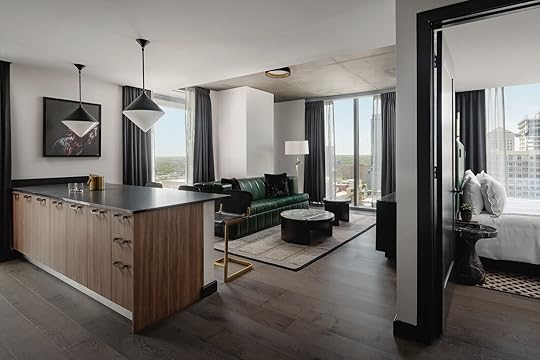
Photo: Chase Daniels
Opened in January 2022, Thompson Austin has 229 rooms, 14 suites, and 17 Upper Stories suites, along with a 6,700 square-foot fitness center. There are rooms to suit every type of traveler, but the Upper Stories rooms were a standout. Located on the 16th floor, these fully livable suites come equipped with smart TVs, a living room, and a walk-in shower with rainfall showerheads, making it perfect for families, extended stays, or couples on a romantic getaway.
To my surprise, the Upper Stories suites also come with fully functional kitchens. In my one-bedroom suite, I found everything I needed to cook a full meal: a stove, cooking utensils, a full-size fridge, and a mini dishwasher. The kitchen connects to an open-concept living room with floor-to-ceiling windows, offering cityscape views. The suite made me feel as at home in the city as I do in my actual home in Austin. This was especially true at night — cloud-like pillows, lush bedding, and a plush rug fostered coziness in the bedroom, allowing me to fall asleep within minutes of hitting the bed.
A hotel designed for great meals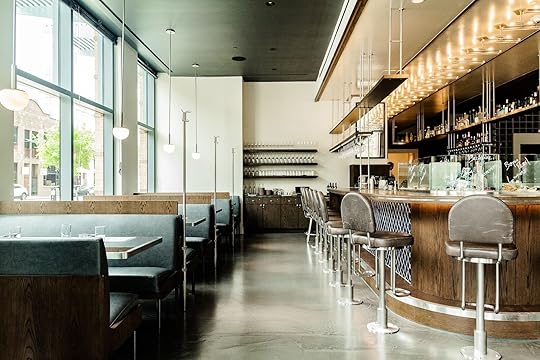
Photo: Jasmin Porter
As someone who dines out frequently, I was amazed by the number of on-site restaurants at Thompson Austin, and the amount of variety they collectively offered. The hotel has a total of four restaurants and bars. On the evening my partner and I arrived, we checked in at Diner Bar, the hotel’s Southern seafood restaurant helmed by the esteemed chef Mashama Bailey.
We started the night with house-made cocktails: Last Flowers (made with gin, creme de violet, lemon, and egg whites) and Big Gold Mine (a blended scotch cocktail with coconut milk, orgeat, lime, and yellow chartreuse). Then came the appetizers: Glacier Bay, Island Pearl, and Village Bay oysters; Alaskan crab with green goddess sauce; and buttery lobster sliders.

Photo: Thompson Austin
A New York strip steak and swordfish frites were plattered up as main courses, both seared to perfection and accompanied with potato wedges topped with sour cream, as well as sharp cheddar mac and cheese. We finished the night with a toasted pistachio affogato and Thompson’s quintessential dessert: a flourless chocolate cake with peanut butter mousse, spiced peanuts, and peanut butter ice cream. A creation of Chef Bailey’s known as the Benne Bar, the indulgent treat is reminiscent of Reese’s peanut butter cups — but in cake form.
The following day, I didn’t have the chance to get breakfast at Grey Market, located on the hotel’s first floor, or Tommie, Thompson Austin’s neighboring sister hotel, which caters to spirited and adventurous travelers. But both offer a relaxed environment to grab classic bites like coffee, granola bowls, pancakes, and guacamole toast.
A new rooftop bar in Austin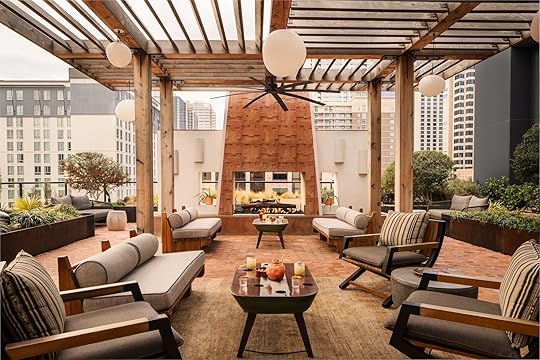
Photo: Thompson Austin
Thompson Austin’s newly debuted rooftop cantina, Arriba Abajo, opened last month. Named after one of Mexico’s celebratory cheers, Arriba Abajo is perched on the fourth floor and outfitted in lush foliage, fringe lampshades, and rattan furniture, making guests feel like they’ve been transported to Tulum. What impressed me was the restaurant’s layout. From the elevator, I was greeted by the open-air patio, which features views of the pool, the outdoor bar, and the skyline.
Inspired by Mexico’s rich and flavor-filled cuisine, Arriba Abajo’s menu includes dishes like shrimp ceviche, heirloom corn chips, chicken milanesa tortas, and carnitas tacos, paying homage to the flavors found in Oaxaca, Yucatán, and the regions in between. My personal favorites were the chorizo-infused queso and the al pastor tacos enveloped in house-made tortillas. The drink menu didn’t miss either, offering mango margaritas, micheladas, wines, and a selection of draft beers, some of which are brewed in Austin.

Photo: Thompson Austin
After a full and satisfying meal, I checked out of the hotel later that afternoon. While I may live in the city, Thompson Austin is a place I’d revisit. If you’re an out-of-towner, stay for a night or two, and if you live in Austin, the food and drinks are reason enough to visit. Then again, you might as well treat yourself to a full-on staycation. 
I Tried Nearly Every Cruise Ship Restaurant on ‘The Greatest Foodie Destination at Sea’

Big-ship cruises, with their thousands of passengers, double-digit deck plans, and mazes of corridors, aren’t for everyone. But with all that space comes a whole lot of dining options. I spent the last week of May onboard the brand new Princess Cruises ship the Sun Princess, a 21-deck cruise ship that can accommodate 4,300 guests and is billed as “The Greatest Foodie Destination at Sea.” During my seven-day Mediterranean sailing, I tried every specialty restaurant on the ship but one, as well as some of the more casual food venues. Here is my ranking of the six (out of seven) specialty restaurants I tried, my reviews of the other dining venues, and everything you need to know before you sit down for a meal at any of them.
Specialty restaurants on the Sun Princess1. The Butcher’s Block by Dario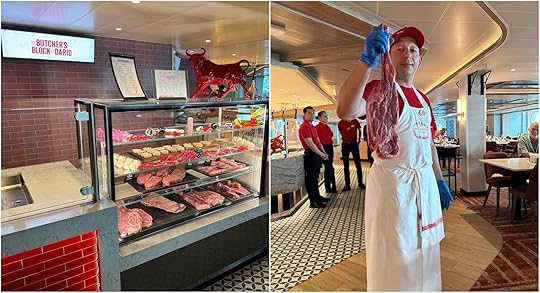 Meat presentation at The Butcher's Block by Dario. Photos: Jesse Adams
Meat presentation at The Butcher's Block by Dario. Photos: Jesse Adams Wine, water, and crudites to start the meal at The Butcher's Block by Dario. Photos: Jesse Adams
Wine, water, and crudites to start the meal at The Butcher's Block by Dario. Photos: Jesse Adams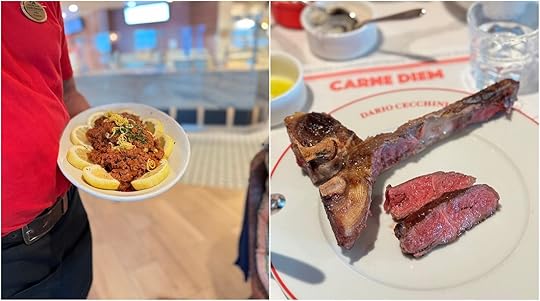 Beef tartare and steak served at The Butcher's Block by Dario. Photos: Jesse Adams
Beef tartare and steak served at The Butcher's Block by Dario. Photos: Jesse Adams Vegetarian offerings at The Butcher's Block by Dario. Photos: Jesse Adams
Vegetarian offerings at The Butcher's Block by Dario. Photos: Jesse Adams Eggs with tomato sauce, a dish that is part of the vegetarian menu at The Butcher's Block by Dario (left). Grappa to end the copious meal (right). Photos: Jesse Adams
Eggs with tomato sauce, a dish that is part of the vegetarian menu at The Butcher's Block by Dario (left). Grappa to end the copious meal (right). Photos: Jesse AdamsDario Cecchini, an Italian butcher from Tuscany often referred to as the world’s most famous butcher — especially since an entire episode of Netflix’ s Chef Table was dedicated to his work in 2019 — partnered with Princess Cruises to open The Butcher’s Block by Dario on the Sun Princess. Despite the fact that The Butcher’s Block by Dario is dedicated to all things beef, it is the best restaurant for vegetarians on board the Sun Princess. I have been a vegetarian for nearly two decades, but my partner is a meat eater and it was a real pleasure for both of us to eat delicious, fresh food that we love without anyone having to make any compromise. While my partner enjoyed the fixed menu that consisted of seemingly endless servings of tender and flavorful beef tartar, rump roast carpaccio, ribeye and T-bone steaks, I dined on amazing crostone with vegetable toppings, tomato stew, chickpea tart, and more. The food and the wine are simple, no frills, yet delicious, much like the venue’s atmosphere, which is relaxed and fun. There’s only one choice for dessert: an olive-oil coffee cake and a glass of strong grappa that will set you right after this abundant food experience.
Menu: Here
Price: $45 per person with meat, and $35 per person for the vegetarian/vegan menu.
Dress code: Casual
2. Love by Britto Love-focused menu at Love by Britto. Photos: Jesse Adams
Love-focused menu at Love by Britto. Photos: Jesse Adams Oyster and Love by Britto Prosecco to start the meal. Photos: Jesse Adams
Oyster and Love by Britto Prosecco to start the meal. Photos: Jesse Adams Floor-to-ceiling windows at the aft of the Sun princess (left). A beautifully presented dessert at Love by Britto (right). Photos: Jesse Adams
Floor-to-ceiling windows at the aft of the Sun princess (left). A beautifully presented dessert at Love by Britto (right). Photos: Jesse Adams The food and the drinks at Love by Britto are all centered around love. Photos: Jesse Adams
The food and the drinks at Love by Britto are all centered around love. Photos: Jesse Adams Photos: Jesse Adams
Photos: Jesse AdamsLove by Britto is a collaboration between world-famous Brazilian artist Romero Britto and Princess Cruises to offer guests a dining experience that’s centered around the theme of love. Located at the very aft of the ship on deck 17, this restaurant is the perfect setting for a romantic meal: It feels secluded and private, and offers the best sea views found anywhere on the Sun Princess thanks to floor-to-ceiling windows all around. The decor, including the menu, the dinnerware, and the cutlery, bear a multitude of hearts. The menu is fixed and includes oysters, tuna tartare, beef tenderloin, and more, but delicious accommodations are easily made for vegetarians. The sommelier is always on hand for a flute of Prosecco flavored with fresh strawberries, a glass of rosé, or a top-up of Argentinian malbec, but there’s also a large variety of amorously named cocktails if that’s what you prefer. The granita of pink Champagne and rose petals and the chocolate lava cake with fresh berries and raspberry cream are the highlights of this fantastic dining experience.
Menu: Here
Price: $79 per person
Dress code: Dressing up is recommended
3. Sabatini’s Italian Trattoria
 Photos: Jesse Adams
Photos: Jesse Adams Photos: Jesse Adams
Photos: Jesse Adams Photos: Jesse Adams
Photos: Jesse Adams Decaf espresso and hazelnut chocolate tart for dessert at Sabatini's. Photos: Jesse Adams
Decaf espresso and hazelnut chocolate tart for dessert at Sabatini's. Photos: Jesse AdamsSabatini’s is a traditional upscale Italian restaurant found on several Princess ships. The atmosphere is romantic and chic, with dim lights, white tablecloths, and a refined decor that will transport you straight to Tuscany. The menu, which includes a variety of vegetarian dishes, lists Italian staples such as arancini, risotto, pasta dishes, tiramisù, and more. Come hungry and choose one item among the soup and salad offerings (zuppe e insalata), one antipasto, one first entree (primi platti), one second entree (secondi platti), and a dessert. The wine list is long and the staff is more than happy to help you make a selection that will pair well with your choices. I opted for a hearty Tuscan soup called Robollita, followed by a dish of creamy burrata and fresh olives and tomatoes, and an entree of primavera pasta before ending the meal with a chocolate hazelnut tart and a decaf espresso. I was very glad I passed on the second entree to keep room for dessert — the servings are very generous. My partner went for the full four courses before his tiramisù and the wobble back to our stateroom after dinner was very slow.
Menu: Here
Price: $45 per person
Dress code: Elegant clothing is recommended
4. Crown Grill Inside the Crown Grill. Photo: James Morgan, Getty Images for Princess Cruises
Inside the Crown Grill. Photo: James Morgan, Getty Images for Princess Cruises Photos: Jesse Adams
Photos: Jesse Adams Photos: Jesse Adams
Photos: Jesse AdamsWhile Crown Grill is a steak and seafood restaurant, the chef is relatively accommodating to vegetarians accompanying meat eaters. Once again, come hungry because the servings are far from stingy. I had the black and blue onion soup (made with beef broth, unfortunately), and a lovely made-just-for-me grilled eggplant and tomato concoction before tucking into the jaw-dropping crème brulée cheesecake. My partner started with the Caesar salad, followed by a gigantic and tender 20-ounce porterhouse accompanied by asparagus, and a traditional baked Alaska to finish. The staff served a selection of three salts from around the world (Hawaiian black salt, smoked applewood salt from Japan, and Himalayan pink salt) to enhance his entree, which made for a new culinary experience and a delectable meal. The Crown Grill kitchen is open to the dining room so you can observe your copious dishes being prepared with care by the excellent team at this chic dining venue. The waiting staff at Crown Grill is perhaps the most attentive and friendly of all the restaurants I tried on board.
Menu: Here
Price: $39 per person
Dress code: Smart casual
5. Makoto Ocean Photos: Jesse Adams
Photos: Jesse Adams Photos: Jesse Adams
Photos: Jesse Adams Photos: Jesse Adams
Photos: Jesse Adams Photos: Jesse Adams
Photos: Jesse Adams Photos: Jesse Adams
Photos: Jesse Adams Photos: Sun Princess
Photos: Sun PrincessMakoto Ocean is a collaboration between famed chef Makoto Okuwa and Princess Cruises to bring the best of Edomae-style sushi to Sun Princess passengers. The excellent Omakase menu consists of nine generous courses, including edamame; miso soup; tuna tartare; a variety of nigiri, sushi, and temaki; and mochi ice cream — all of which are some of the freshest and most flavorful dishes my partner ever had. While the menu is focused on raw fish, as it should, vegetarians are still able to find suitable items from the menu, including charred edamame and garden, avocado, and cucumber rolls. The fine food, however, is hard to enjoy considering the restaurant’s regrettable location. While the views from the sphere are particularly beautiful, Makoto Ocean is entirely open to the piazza, which, unfortunately, is the heart of the ship and the loudest and busiest part of the Sun Princess. We dined at Makoto Ocean on the night of the Captain’s Welcome Aboard speech and could barely hold a conversation for all the noise around us. Pick an early time for your dinner, or choose a quiet night if you can.
Price: $45 per person for the fixed Omakase menu. The rest of the menu is a la carte.
Dress code: Dressing up is recommended
6. Umai Teppanyaki/Hot Pot Photos: Jesse Adams
Photos: Jesse Adams Photos: Jesse Adams
Photos: Jesse Adams Photos: Jesse Adams
Photos: Jesse Adams Photos: Jesse Adams
Photos: Jesse Adams Photos: Jesse Adams
Photos: Jesse AdamsUmai is primarily focused on two things: teppanyaki (where the chef cooks and entertains behind a griddle surrounded by a handful of guests) and hot pot. In order to experience the famous theatricality of it for the first time, I opted for the teppanyaki experience, which provided not only an abundance of food, but also great options for my vegetarian diet. With fried rice, tofu with udon noodles, and mochi ice cream, there was more than enough tasty food for me to be satisfied. That said, despite being fun, the concept lacks originality and creativity. Hearing the chef at the next metal griddle making the exact same jokes as the chef in our section just 30 seconds later was a bit of a disappointment.
Menu: Here
Price: $45 per person
Dress code: Casual
 Antipasto platter and signature Princess Pizza. Photos: Jesse Adams
Antipasto platter and signature Princess Pizza. Photos: Jesse Adams Enjoying a Roma cocktail and a cannoli. Photos: Jesse Adams
Enjoying a Roma cocktail and a cannoli. Photos: Jesse Adams Photos: Jesse Adams
Photos: Jesse AdamsAlfredo’s Pizzeria is a bright and simple-yet-stylish venue with a mouth-watering menu of Italian specialties, including antipasti and freshly made pizzas and calzones. The pizzas and calzones are made in the open pizza station so you can see them cooking. The pizza menu has enough variety to suit every taste and diet, including those opting for a meat-free meal. During our lunch at Alfredo’s Pizzeria, I opted for a vegetarian pizza bianca, which was very cheesy but flavorful, accompanied by a delicious and refreshing Roma cocktail (gin, elderflower, limoncello, and fresh raspberries). My other half ordered an antipasto platter followed by the signature Princess Pizza with Parma ham. We both ended the meal with an excellent chocolate and pistachio cannolo.
Price: $14.99 for a starter, a pizza or calzone, and a dessert.
Dress code: Casual
Horizons Dining Room Waffles and eggs Benedict for breakfast in the Horizons Dining Room. Photos: Jesse Adams
Waffles and eggs Benedict for breakfast in the Horizons Dining Room. Photos: Jesse Adams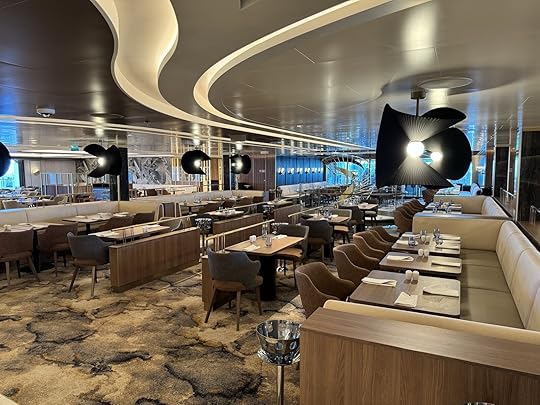 Photo: Jesse Adams
Photo: Jesse Adams Texas French toasts and pastries for breakfast in the Horizons Dining Room. Photos: Jesse Adams
Texas French toasts and pastries for breakfast in the Horizons Dining Room. Photos: Jesse Adams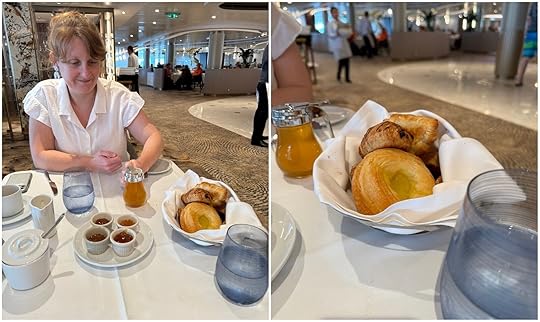 Pastries, butter, and jams are always on the table for breakfast in the Horizons Dining Room. Photos: Jesse Adams
Pastries, butter, and jams are always on the table for breakfast in the Horizons Dining Room. Photos: Jesse AdamsThe Horizons Dining Room is the main breakfast, lunch, and dining venue for all Sun Princess passengers. Instead of feeling like a gigantic and noisy canteen like cruise ship dining rooms often do, this one has a cozy and private atmosphere — even though it’s spread over three floors. This small-restaurant vibe is mostly due to the smart partition of the space into smaller areas, but also to the choice of wooden Mid-Century-inspired furniture and refined-yet-simple light fixtures. While the extensive breakfast menu remains the same every day with offerings of waffles, eggs, bacon, pancakes and pastries galore, the dining menu changes to offer guests a variety of dishes that match the ship’s location.
Price: Included
Dress code: Anything you like, from casual to formal, it’s up to you
Americana Diner Deep-fried cauliflower and tater tots, root beer float. Photos: Jesse Adams
Deep-fried cauliflower and tater tots, root beer float. Photos: Jesse Adams Strawberry milkshake, nachos. Photos: Jesse Adams
Strawberry milkshake, nachos. Photos: Jesse Adams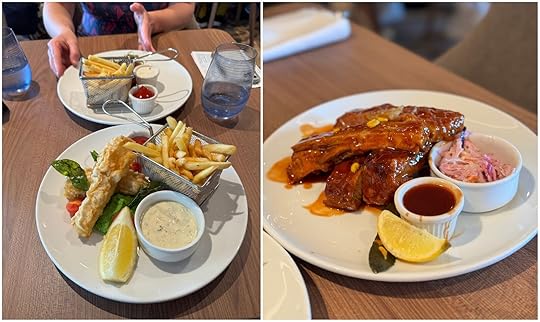 Fish and chips, BBQ ribs. Photos: Jesse Adams
Fish and chips, BBQ ribs. Photos: Jesse AdamsThe Americana Diner is located within the main dining room on deck eight, with the same same beautiful and intimate decor you’ll find in the Horizons Dining Room. What makes the Americana Diner unique on the Sun Princess is its menu of no-frills, rich, and copious diner specialties, including milk shakes, soda floats, saucy ribs, nachos, fish and chips, omelettes, etc. My partner and I went twice for late lunches and both times we thoroughly indulged in the excellent food served and came out incredibly full and satisfied. The Americana Diner is open for brunch, from 10:30 AM to 3:30 PM, and for dinner from 6:00 PM to 10 PM, so you can have breakfast for supper.
Price: Included
Dress code: Casual
The Eatery Bakery and Pastry station at the Eatery. Photos: Jesse Adams
Bakery and Pastry station at the Eatery. Photos: Jesse Adams Asian-inspired meal and breakfast from the Eatery. Photos: Jesse Adams
Asian-inspired meal and breakfast from the Eatery. Photos: Jesse AdamsThe Eatery is the buffet section of the Sun Princess. It offers a huge selection of food spread over several stations, including an Asian station where you’ll find the likes of spring rolls and ramen noodles, a carving station for meats, a salad bar, an Italian bar, a dessert station, and more. The Eatery is open throughout the day from 6 AM to 10 PM. It’s where we ate upon embarking the ship, as well as once more for a quick breakfast, but because it gets very crowded, we mostly stayed away from it after that, even though there’s plenty of good food to be had.
Price: Included
Dress code: Casual
The International Café
Photo: Jesse Adams
The International Café is a great spot for a quick breakfast or a treat. There’s a large selection of cake slices, cookies, muffins, and doughnuts, as well as savory items such as quiches, bagels, and sandwiches. But the best part is the specialty coffees on offer. I tried the tiramisù cappuccino and the Nutella cappuccino, and both were as flavorful and indulgent as expected. I wish I had the time to try the pink latte (made with dragon fruit) and the mocha caramel Latte, but there’s only so much I can ingest in the space of seven days. Note that the International Café is located around the Piazza on deck nine and can get quite busy and loud, with very few seats available. Taking your order to go and finding a more quiet space is a good idea if you want a more tranquil experience.
Price: A la carte
Dress code: Casual
Gelateria
Affogato and fior di latte gelato. Photo: Jesse Adams
For the Gelateria, the people at Princess Cruises went all out and sent some of their crew members to be traditionally trained in Italy so that they could produce authentic gelato for their guests. And it shows. The Gelateria is the best place for ice cream on the ship, and the best spot for affogato if, like me, you want coffee with every meal and snack. The servings are generous and, surprisingly, the venue was rarely busy.
Price: A la carte
Dress code: Casual
Coffee and Cones
The Leaning Tower Premium Dessert, and blue granita from Coffee and Cones. Photo: Jesse Adams
Coffee and Cones is an outdoor venue close to the main pools where, as the name indicates, you’ll find a small selection of coffees, granitas, vanilla soft-serve ice cream, and what Princess Cruises call premium desserts. I tried a couple of granitas (blue raspberry and strawberry) and both were deliciously sweet and refreshing, but my real reason for visiting Coffee and Cones was to try out one of the gigantic premium desserts. The premium desserts are concoctions of ice cream mixed with sweet sauces (chocolate, caramel, and the like), candy toppings, cookies, and more. I tried the beautifully presented leaning tower premium dessert, which was immense, heavy, and overflowing with goodies, but not as sweet and certainly not as flavorful as expected.
Price: A la carte. Premium dessert are $12, granitas are $8, soft serve vanilla ice cream is $4, and the coffee selection ranges from $2.50 to $4.
Dress code: Casual
Lido Hot dog and fries from Lido on board the Sun Princess. Photos: Jesse Adams
Hot dog and fries from Lido on board the Sun Princess. Photos: Jesse Adams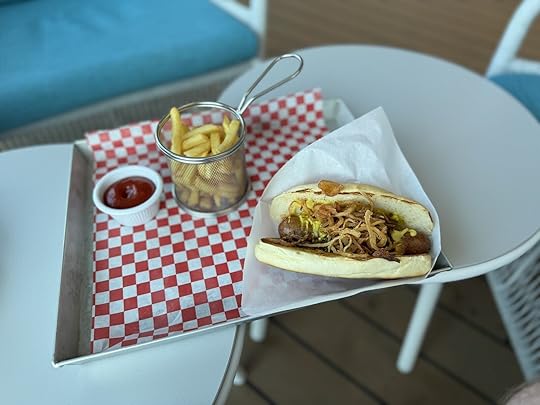 Burger and tacos from Lido on board the Sun Princess. Photo: Jesse Adams
Burger and tacos from Lido on board the Sun Princess. Photo: Jesse AdamsLido consists of five venues that are located near each other by the main pools on deck 17. The five venues consist of Lido Bar for drinks only; Lido Greens for salads; Lido Grill for hot dogs, burgers, and fries; Lido Tacos for tacos and burritos; and Lido Slice for pizzas. My partner tried the Lido Grill for a hot dog with fries, while I tried Lido Tacos where there are vegetarian options. At both venues the service was extremely fast, the servings were large, and the food lovely.
Price: Included
Dress code: Casual 
My Yoga Teacher Training Happened 63 Miles North of the Arctic Circle. Here’s How It Changed Me.

I admit, I was initially a bit apprehensive about the concept of being totally isolated for eight days in the Arctic wilderness, 63 miles north of the Arctic Circle. Would I panic without reliable cell phone connectivity or Wi-Fi, far away from my busy life in bustling Los Angeles and the security of my loved ones? In April, I put these anxieties to the test. Instead of traveling somewhere more “traditionally” associated with a yoga certification like India or Bali, I felt called to embark on a more adventurous (albeit remote) trip to learn amongst the wild and inspiring beauty of Northern Alaska.
The “SHEWild” women-only 200-hour Yoga Teacher Training, led by Mollie Busby of the Arctic Hive, took place in the tiny but mighty village of Wiseman, Alaska, the “immersive” portion of my hybrid training experience to earn yoga teacher certification. It’s no coincidence how powerful and transformative the journey felt in the heart of Northern Alaska. The retreat forever changed my yoga practice and, I’m learning after the experience, has had the same positive experience in other aspects of my life.
A hybrid training experience opens opportunities from afar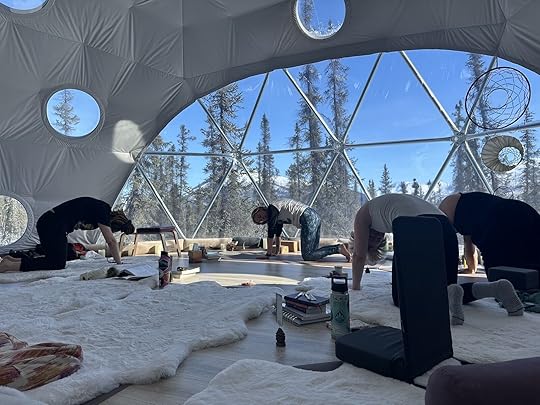
The author leading class. Photo: Mollie Busby
It’s important to recognize there was no such thing as a “hybrid” yoga teacher training before the COVID-19 pandemic expanded online learning and made virtual certifications a possibility. Yoga Alliance, the largest nonprofit association representing the yoga community and arguably the most trusted regulator of Yoga Teacher Training certification regulation, didn’t allow online or hybrid training or certification pre-covid.
The pandemic rocked everyone’s world, but one thing that came out of such a challenging situation was expanded opportunities to learn and grow online, virtually, and build digital communities as opposed to solely being able to earn degrees and certifications in person. As academic universities worldwide loosened their criteria to allow students to earn their degrees digitally, so did the Yoga Alliance.
For me, that meant a chance to build a community and earn my certification alongside seven other women ranging in geographic location from Alaska to Maryland, San Diego, Wisconsin, and, in theory, anywhere in between.
For my yoga teacher training experience, our education was segmented into three parts.
Part one of our training included a live online instruction series, where we logged onto Zoom for two weekend-long sessions spanning from roughly 4 PM to 7 PM Pacific Time on Friday and 6:30 AM to 2 PM Pacific Time on Saturday and Sunday. We also had four weekday virtual meetings of live online instruction in between these weekend sessions. On the final Zoom session, we’d be teaching a 45-minute class to our fellow trainees — a task that initially seemed daunting but, like the trip to Alaska, became an incredibly positive and transformative experience for our cohort.
Part two of the training meant keeping up with pre-recorded, self-paced video content produced exclusively for the “SHEWild” cohort. We’d work through this “homework” material progressively on our own time.
But the part of the experience that called to me most was part three: an immersion trip to Mollie Busby and her husband Sean’s property, Arctic Hive, in Wiseman, Alaska.
The Arctic Hive cultivates a magical sense of community in the backcountry
The Northern Lights made frequent apperances. Photo: Molly O’Brien
This retreat is located 270 miles from the nearest town (seven hours from the nearest grocery store) — among the breathtaking scenery of the arctic Brooks Range. It’s known as the northernmost yoga school in America.
Arctic Hive is located between two well-known protected wilderness areas of the Brooks Range (Gates of the Arctic National Park and Arctic National Wildlife Refuge), meaning pure and unfiltered wilderness. Spending time here meant experiencing a raw, introspective journey that’s a bit more far-flung — and far less humid than some other teacher training trips I had heard of.
At Arctic Hive, travelers are separated from the petty problems of the outside world and have the space to become more aware of what’s really important — feeling and fostering a genuine connection between two souls (whether it’s human to human or animal to human), loving and kindness, and respect for our bodies (they’re the only ones we get).

Dinner is served. Photo: Molly O’Brien
It’s a total physical and neurological reset for those who take the time to invest in the experience. We nourished ourselves with healthy food eaten in a community setting and learned away from the anxieties that can come with access to modern technology.
But actually getting to the Arctic hive isn’t an easy feat. The journey to this remarkable destination requires quite a physical and financial investment. Travelers fly to Fairbanks where they’ll meet up with the cohort of fellow trainees for an 8-10 hour drive along the daunting Dalton Highway up to the 12-person village of Wiseman, a century-old former mining town, which boomed in the 1920s but today serves mostly as a seasonal destination for viewing the aurora borealis and as a home base for outdoor recreation. From Wiseman, it’s a short one-mile hike upslope to the property, which labels itself “boutique, off-grid accommodations” and is settled into the bush on a hill overlooking the town.
Life at The Hive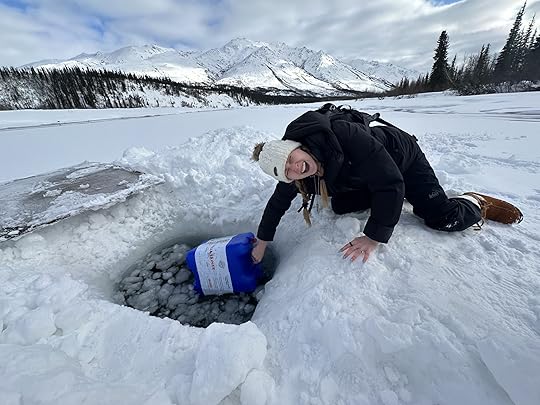
The author fetching water before getting soaked. Photo: Mollie Busby
The cost of my immersion trip and training, totaling $4,950, included transportation to and from Fairbanks, lodging, my yoga teacher training manual, and three home-cooked square meals a day on-site.
Once we arrived at Arctic Hive, we cozied into our assigned cabins — three off-grid Nordic-style buildings perched at the top of the hill overlooking the property, each boasting stunning mountain views.
The big windows showcase the snowy peaks during the day and the colors of the aurora borealis on a clear night. There was ample heating via Swedish Nordic oil stoves, solar and battery-powered lighting, a Berkey water filter system for fresh drinking water (sourced by Arctic Hive), and old-fashioned kerosene lamps. Power on-site is soured via solar, with a backup generator. All cooking needs are met by propane).
But the real kicker (and something we knew going into this trip — but which hadn’t set in until we left Fairbanks and were clear out of cell phone range) was minimal-to-no real connection to the outside world.
Guests are allowed to use the cell phone booster that Mollie and Sean have if they need to connect with a loved one or require some sort of communication accommodation — but in reality, there was virtually no reliable cell phone or computer connectivity (and no need for it) for the duration of the entire trip.
It didn’t matter. It felt comforting to know we were safely isolated from the dangers and discomforts of the outside world inside the cocoon that is Arctic Hive. We spent a lot of time in the property’s Wilderness Lodge — a 20-foot diameter insulated fiberglass igloo dome that the couple built themselves, by hand. In fact, everything on this property was built by Mollie and Sean (there was nothing here upon their arrival to the land) via lumber and supplies hauled in during the warmer months, the only time of year when construction is possible. This dome was where we gathered for meals and bonding between lectures and lessons.

The dome at dusk. Photo: Mollie Busby
Down the hill a bit further is the destination that attracts the eye of most attendees before their trip even begins — a 24-foot Geodesic dome called the “Yoga Hive,” or “The Hive” for short. This is the first place we’d meet upon waking, where we’d practice daily, and where most of our lessons and lectures were held during the immersion.
To say the Yoga Hive is “dreamy” would be an understatement.
This enormous, clear fiberglass dome offers sights of the snow and scenery from above, seemingly bringing you at one with Earth and sky in a protected space meant for releasing all tensions while soaking up the serene spirits. It was like a warm cocoon away from the harsh realities of the real world. Some people travel to Arctic Hive because they see photos and are drawn in by the serenity of the Yoga Dome, and its easy to understand why.
Another favorite part of the journey for me (and my fellow women trainees) was the Busby’s sled dogs, which slept on-site right next to the Yoga Hive igloo in the dog yard.
These jovial, energetic pups were born and bred for pulling sleds — but are Mollie and Sean’s pets, whom they care for and love. Each has its own dog house embedded with a thick layer of straw. While we were at Arctic Hive for our retreat, we were lucky enough to go on a dog sledding ride, an invigorating change of pace.
As for bathroom breaks? It’s still the backcountry wilderness, after all — meaning visitors do their “business “ in the single clean outhouse that’s tended to daily (along with a few designated “facility trees” in the woods).
Interconnectedness in the wilderness
The excitement level matched the beauty of our surroundings. Photo: Tamara Swenson
Living this way — essentially off-grid, among other like-minded women from across the country who had all come to this magical place to learn about spirituality in a completely immersive sense — made yoga teacher training even more powerful than I’d thought possible.
For those who want to visit and experience the enchanting setting of Arctic Hive but aren’t necessarily interested in investing in getting their yoga teacher certification, Mollie and Sean host a lineup of other organized retreats throughout the year. They also rent out the space to groups who want to host customized retreats.
This adventurous duo knows exactly what they’re doing, incorporating respect for their surroundings and a commitment to preserving the integrity of the sacred land on which they reside.
Adventures in the Arctic
Baggage claim in the Arctic. Photo: Molly O’Brien
Mollie and Sean’s sled dogs taught us that in this wild place, Mother Nature is the ultimate Queen. After one particularly rowdy and howl-y night on the date of the 2024 solar eclipse (these dogs like to howl — but there was more howling than usual on this evening) we discovered one of the dogs had given birth to a puppy. It was thrilling, unexpected, and very much welcomed.
The new pup, appropriately named “Eclipse,” made us more aware of how powerful and self-sufficient nature is (we had no idea this dog was pregnant, and it gave birth using its existing instincts and no human intervention). I had never seen a creature so tiny, but fierce. This pup was born in the bush and its mother knew how to survive and keep it alive without anyone else even being aware of its existence until the next morning during the dog’s breakfast time.
I, however, learned how harsh and unforgiving the tundra can be (especially mixed with climate change appearing to warm the earth quicker and quicker each year). One afternoon, I went with Mollie and a few other women to source water that would be filtered for us to drink and cook with. We went down to the river that the Busbys use for their freshwater filtration efforts and dragged the sled across the “ice bridge” leading to the river.
Someone made a joke about falling into the river, and we each leaned over the ice one at a time and filled the bucket up with the streaming snowmelt water, which was frigidly cold, then turned to head back to the Hive with our haul on the sled. I was about 10 steps behind Mollie and another trainee, when I stopped to admire the view of the mountains behind the river from on top of the ice bridge (and perhaps try to snap a quick photo of the sights).
Like something out of a movie, everything sped up while I felt myself tilting downward — slowly, at first, then more quickly careening forward toward and then into the river. Before I even realized what happened I was engulfed from the hip down on my right side in the freezing water — and after we all realized I was physically we were in fits of laughter, because what are the odds it’d actually happen? I became the girl that fell into the frozen river and I don’t think I’ll ever live it down (oh well). Fortunately I was just in need of some dry clothes and a boot warmer to dry out my Mukluks.
No cell phones (just sisterhood) — no problem
The inside of a cabin at Arctic Hive. Photo: Molly O’Brien
After a week of waking up each morning to the quiet and crispness of the clear Arctic air followed by a morning meditation and a series of educational lectures, hikes, and yummy, healthy meals, it was as if we had been spiritually healed (or were on our way to healing ourselves based on the lessons we’d learned in this sacred safe space. It was then time to come out of the cocoon and leave the hive, to return to the “real world” and reintegrate ourselves into society, but with a newfound sense of wonder and purpose.
Witnessing the power of bringing new life into the world with the birth of an innocent puppy, paired with the harsh reality of a river submerging incident (that in another, colder season could have led to vastly more dire consequences), melded with the general sense of community and support felt between the women on-site at Arctic Hive inspired a fresh sense of hope and wonder for healing ourselves and others.
Forever changed inside, among the same outside reality
Having a mala moment. Photo: Mollie Busby
Luckily for us, once we reintegrated following our trip to the Arctic, the journey wasn’t over. We still had a month of virtual teacher training lessons to conquer and a final weekend-long Zoom session where we’d draw together everything we’d learned by each solo teaching a 45-minute class.
During the final day of class, we came together to reflect on how much the experience had changed our lives — from the heartfelt connections we’d made virtually, to the power of the immersion experience and how it stripped us down to reinforce how the most important things in life are not necessarily tangible.
The lessons we learned at The Hive were both in yogic tradition and human nature — to care for and be open to being taken care of, letting go of outside fears and inhibitions and instead opening ourselves up to possibilities that can come with a clearer sense of self-purpose and a greater intention for cultivating a better world.
Traveling to Arctic Hive is an investment spiritually and physically and I can now say with full confidence once you go, your perception of reality will forever be enlightened. 
Matador Network's Blog
- Matador Network's profile
- 6 followers




